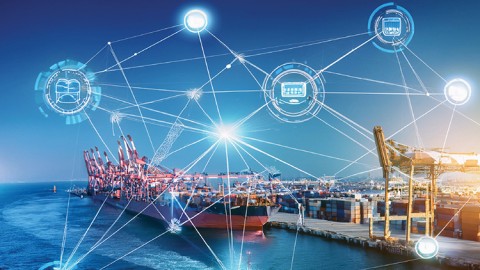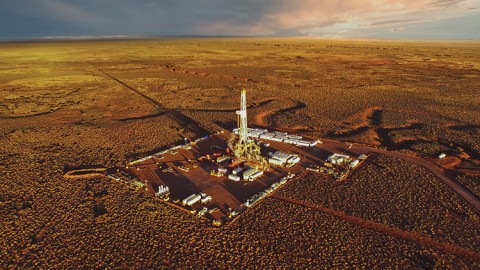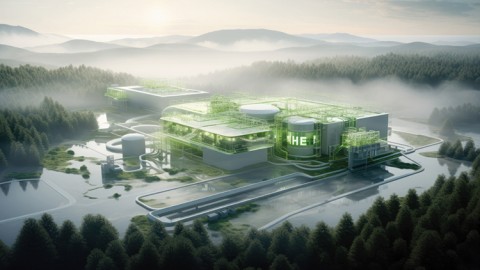General Overview of the Mineral Resources in Egypt
To begin with, Egypt is one of the most mineral-wealthy countries in Africa. In fact, Egypt is not only abundant in the amount of mineral resources available, but in the variety of these resources. The primary essential mineral resources found in Egypt mainly consist of metallic and non-metallic mineral resources. Metallic mineral resources include materials such as copper, lead, nickel, cobalt, gold and silver, while non-metallic metals typically are those of limestone, sandstone and gravel dolomite.
However, there is an enormous interest in metallic mineral resources, especially with the advancement of Renewable Energy Technologies (RETs). This is mainly due to the fact that RETs are constructed from metallic mineral resources such as copper, aluminum and zinc. Despite the fact that the mining process is not exactly considered to be the most environmentally friendly activity due to the ecosystems that are disturbed and the environment that is polluted and torn, mining is essential in manufacturing RETs to help combat climate change. Without mining for such mineral resources, the existence of renewable energy technologies would – if not reduced – come to a halt. As a result, this very concept leaves various countries in a difficult dilemma: to mine or not to mine?
Mineral Resources in RET
Before analyzing the key concerns over mining for mineral resources to manufacture RETs, it is important to understand the kind of mineral resources required, its availability and the ease of extraction process. For instance, copper, zinc and aluminum are necessary to manufacture Solar PV Panels. The byproduct of copper, zinc and aluminum are tellurium, germanium and cadmium, respectively. The latter three mineral resources are used to manufacture most Solar PV Panels.
At the moment, according to the Egyptian Mineral Resources Authority (EMRA), it was estimated that Egypt has over 224 million metric tons (Mt) of various heavy metal mineral resources; these include: aluminum, copper, lead, thallium as well as zinc. In fact, in 2015 alone, it was noted that Egypt’s Mineral Trade was inclusive of exported aluminum at a value of $403 million, exported copper at a value of $10.7 million and zinc at a value of $87.81 million. While these prices and amounts of mineral resources have been decreasing over the last few years, Egypt remains abundant in mineral resources and has continued to mine for such resources at a steady pace.
However, it is predicted that by 2050, there will be a drastic increase in the percentage of the world’s mineral resource production. In order to meet the demands, mining activities will need to increase in frequency between now and 2050. In fact, it is hypothesized that there will be a growth in demand for copper mineral resources by nearly 7%, while 93.7% of the copper demand in 2050 is expected to come from different forms of RETs; 38.8% for Solar PV Panels, 35.2% for wind turbines, 10.2% for CSPs (Concentrated Solar Panels), 4.4% from Hydro technologies, 3.8% for storage technologies and batteries and, finally, 1.3% for Geothermal technologies. These figures not only show the importance of copper and other essential mineral resources for the future, but also indicate that the key to clean energy is metal mineral resources that are attained from mining and excavation processes.
A report by the GIZ confirmed that the shift to a lower carbon footprint economy will ensure more job opportunities and better job security in emerging countries in Africa, where the supply of mineral resources is plentiful and readily available for extraction. In fact, now, over 70% of the global cobalt supply lies in Africa, along with other essential mineral resources that have a high global demand.
The Controversy
While many can agree that the implementation of RETs is the way to a low-carbon emission future, there is a controversy over the fact that the materials or mineral resources required to manufacture RETs are extracted through a non-environmentally friendly process: mining. Mining required a wide space of empty land, meaning any or all flora and fauna are negatively impacted by drilling the ground, along with its nuisance, emissions from machines, habitat destruction, etc. After concluding that the environmental impact of mining is negative, many wonder whether mining for mineral resources is better for a cleaner environment (by manufacturing RETs) or limit mining for a cleaner environment (by limiting emissions and physical damage to the earth). The mining process seems to minimize the positive effect of RETs, if not, cancel it out.
According to Mostafa Abdelhafiz, Research Associate at Drilling Simulator Celle, “Drilling can cause some environmental impacts. As an example, changing the earth’s in-situ stresses can create micro-seismic activities and that may lead to earthquakes, reactivating the faults and may also damage the underground water resources. All these impacts can be avoided with better knowledge. You cannot eliminate the risk by 100%, but you can reduce it”.
Another concern revolving around the continuation in the growing demand for mineral resources is that all mineral resources are finite and would eventually be depleted. Many have considered that dependence on mineral resource extraction over the course of the coming years will not guarantee a future with profuse RETs. As a result, two plausible solutions are suggested: either limit the mining process for purposes other than clean energy or develop RETs to be composed of other materials that are more-environmentally friendly.
Despite the positive intention of limiting mining, it is a difficult task to carry out because mining brings out mineral resources essential to manufacture technologies necessary for hospital equipment, transportation vehicles, communication wires and much more. However, the suggestion to create RETs from other minerals is a viable solution. For instance, there have been several studies introducing the implementation of recyclable materials from old RETs into new ones. By recycling the blades of a wind turbine alone, this could save up to 55,000 tons of glass and carbon fiber composites. This is one of many alternates for the use of green materials in RETs, it is just a matter of developer awareness and implementation.
Case Study on a Mineral-Rich Country and its Uses
In a case study conducted on the transition to the implementation of more RETs, it was found that Chile could supply its own local copper and lithium mineral resources – and even possibly provide a global supply in the future. While copper and lithium are essential in manufacturing various RETs such as Solar PV Panels and batteries, the mineral resources would be used for other purposes and are found in large amounts in Chile. Now, Chile’s copper resources account for just over 10% of the country’s GDP, however, it is expected to rise by over 20% in 2030. In fact, Chile’s profuse supply in copper resources has provided the country with an incentive to have a 70% share in the Renewable Energy market by 2050 due to the availability of resources.
Another example of a mineral wealthy economy is in Peru. This Latin-American country is wealthy in mineral resources such as copper, iron, lead and zinc. Peru, like Chile, has an abundance of mineral resources. Most of such mineral resources can be used for RETs in the country that has long coast lines with potential for hydro power production. This is yet another example of a mineral rich country that has potential to use its mining resources for renewable energy to counteract the negative impacts and emissions released from the mining process.
Future Improvement and Conclusion
As for the future improvement in mining, it is important to recognize the global potential for mineral resources because each country has its own resources to offer. According to Abdelhafiz, Drilling can be extremely harmful with the lake of knowledge. And it can be extremely safe if the driller and the well construction engineer are aware of the environmental impacts.” It is not feasible to stop the mining process altogether for the purpose of controlling emissions. In fact, mining for mineral resources is beneficial in creating RETs to counteract such emissions over a long period of time. A plausible solution, however, could be to carry out the mining and extraction processes in a more environmentally friendly way, using efficient technologies, limiting waste, and reducing the disturbances in the ecosystem of all living things. If such precautions are taken, then the future of mining could be more beneficial and less detrimental to the environment.








